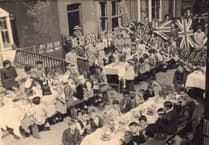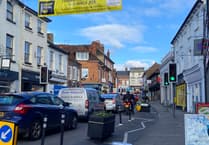This week we visit another of the area’s lost landmarks – Weydon Mill, a picturesque building that once stood on the Farnham side of the town’s boundary with Wrecclesham.
The mill was one of 22 that could be found along the River Wey, which at one time had more mills per mile than anywhere else in Britain.
Mills played an essential role in communities. Apart from grinding corn for local consumption, they were also used at various times for rolling oats, fulling wool and grinding grain, and in the production of paper, leather and gunpowder.
An old name for Weydon Mill was La Medmulle, which literally means ‘the mill in the meadow’, an obvious reference to its location in the water meadows to the south-south west of Farnham.
The mill was one of six in the Farnham area recorded in the Domesday Book and it is also mentioned in another historic document, the Bishop of Winchester Pipe Rolls, in the 13th century. At one point, it is believed to have been connected to Waverley Abbey, leased possibly as a fulling mill.
From the 17th century Weydon Mill underwent several changes in ownership and over the centuries it would have undergone various transformations. The last mill was established on the site in the 18th century.
According to the Wrecclesham History Project, this was a picturesque building with an undershot waterwheel driving four pairs of millstones.
The mill was in the hands of the Simmonds family for most of the 19th century until it was sold in 1892. Sidney Higgins was the miller when it closed in 1909. By 1912 it was in such a poor state that attempts were made by local people to save and preserve it, but the owner at that time, the well-known local brewer William Trimmer, did not share their views and in 1919 it was demolished.
Historic views of Weydon Mill can be seen in a number of paintings in the care of Farnham Museum and the memory of this once-large landmark lives on in the road name Weydon Mill Lane.
Do you have any memories or pictures of lost landmarks? They may be houses, shops, pubs, monuments or even trees that have now been lost to communities in the area. Email [email protected]

-Imam-Adeel-Shah-Mr-Razwan-Baig-Nicky-Banger-and-Mr-Amer-Safer.jpeg?width=209&height=140&crop=209:145,smart&quality=75)



Comments
This article has no comments yet. Be the first to leave a comment.